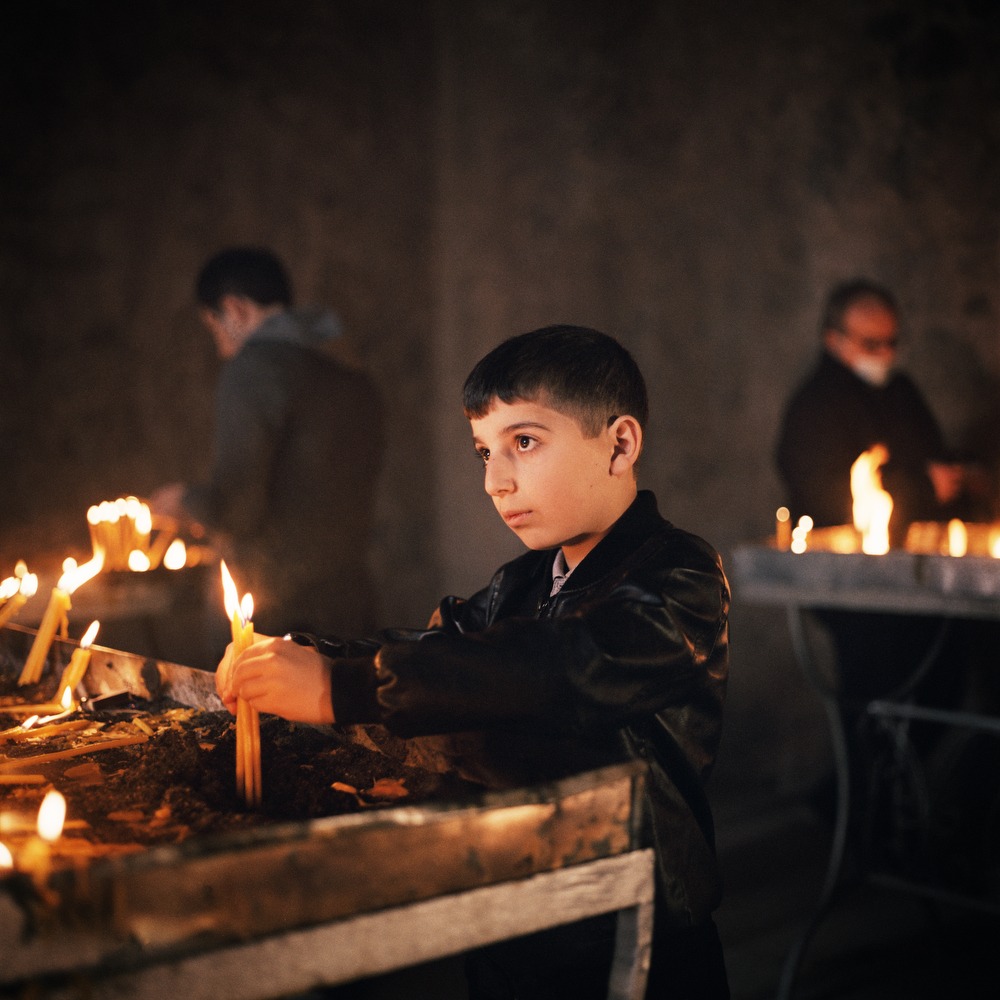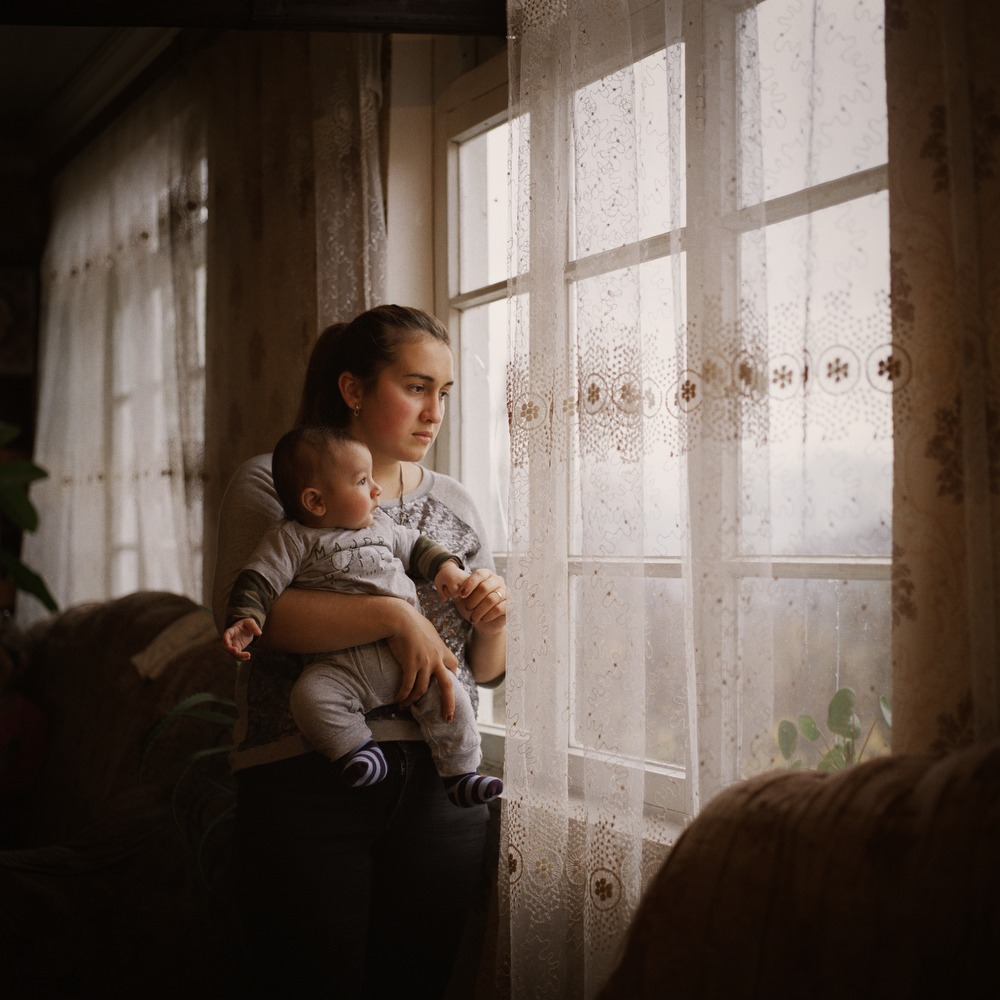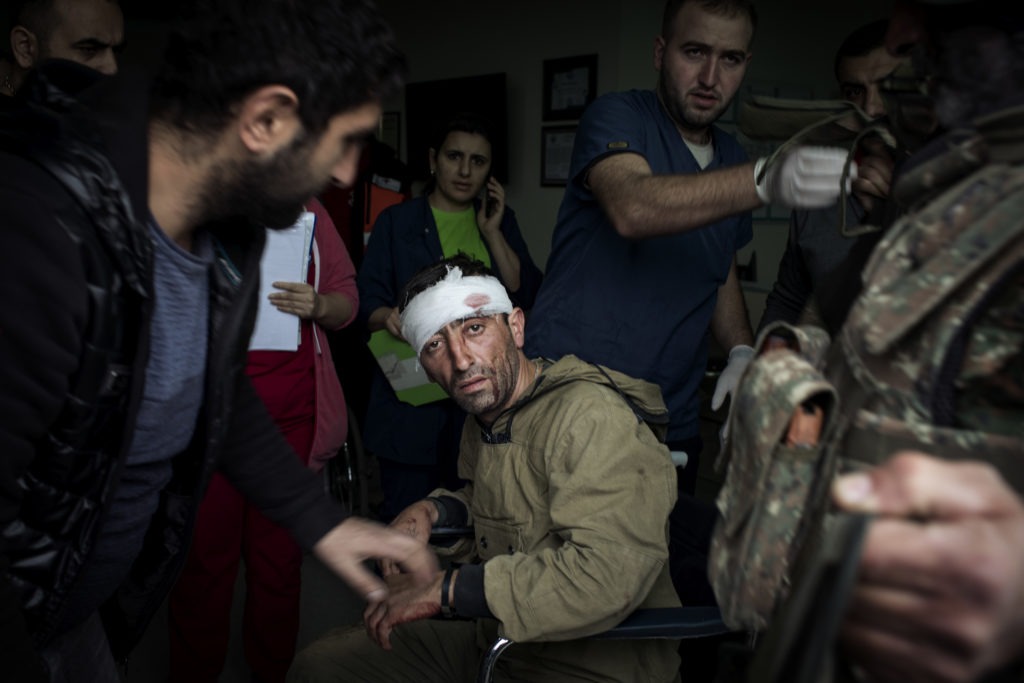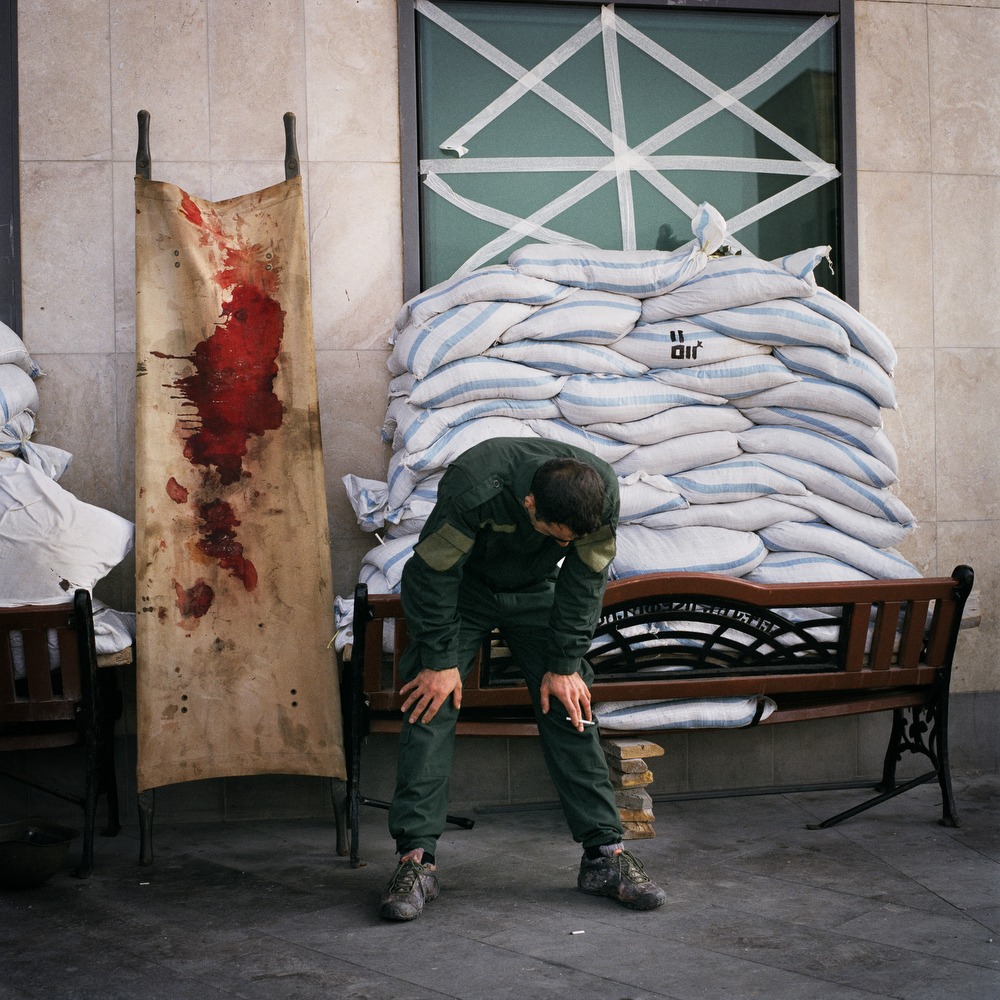“I am interested in telling people’s personal stories and the way that war has affected their lives”
In 1988, war erupted between Armenia and Azerbaijan over the Nagorno-Karabakh region which is situated in southwestern Azerbaijan. However 90% of the population who live in this area are ethnic Armenians. The conflict ended with Armenia taking control of the region and seven surrounding Azerbaijani districts including Kalbajar. On 27th September 2020, with the political support from Turkey, Azerbaijan launched an offensive to retake Nagorno-Karabakh. It resulted in a six-week conflict which killed over 5,000 soldiers and 143 civilians, displacing thousands from their communities. A major outbreak of Covid-19 escalated out of control crippling the health care system. On the 10th November, a Russian mediated peace deal ended the war, resulting in Azerbaijan retaining territory taken during the earlier conflict and regaining districts surrounding Nagorno Karabakh.
In the ancient, medieval monastery of Davidank set in the mountains of the Kalbajar region, a boy is lighting a series of candles. It is a still scene; golden light touches his face, he looks out but not towards us. Behind him Armenian worshippers are making their final prayers, they realise this could be the last time before the monastery will be handed over to Azerbaijan. An image captured by the photojournalist Anastasia Taylor-Lind in November 2020 on her latest report on the Nagorno-Karabakh conflict.
Last year, Anastasia and the journalist Kristen Chick went out to the region for a month where they covered the final two weeks of the war and the immediate aftermath. “I am not a press photographer; I would never see a conflict breaking out and then go to cover it. This is not how I work; I am interested in telling people’s personal stories and the way that war has affected their lives. In 2011, I worked in Nagorno- Karabakh and therefore it felt important to me that I went back to see how the conflict was impacting on the communities and families I had photographed before.”
Anastasia captured a series of photographs close to the frontline at the emergency department of the Republican Medical Centre in Stepanakert. In one of her images, a crowd of medical staff gather to admit a wounded combatant who has been injured in the battle for Shusha (known as Shushi by the Armenians). The bandage that covers his head is already stained with blood. They are all caught in motion, blurred in the frantic chaos. Only the combatant is in focus; his eyes look directly at the camera. “We wanted to show the relentless pressure the medical teams were under and to visualise the violence that was happening in Shusha. I knew the Director of the emergency department Grigory Arustamyan because back in 2011, I photographed the christening of his first daughter at the Ghazanchetsots Cathedral. I had his permission to be able to photograph, but in an emergency situation everything happens very quickly. There is no chance to speak to anyone, the medical staff are taking severely wounded soldiers straight from the ambulance to the emergency room. In these moments, I have to be immediate, this is a very different approach because normally I spend time and build a relationship with the people I am about to photograph.”
When the fighting began, the outbreak of Covid-19 reached new heights. It became impossible to track those affected with the virus. Medical staff stopped wearing PPE as they became overwhelmed with the wounded and volunteers including aid workers and combatants from Armenia crossed the border bringing the virus with them. Many families were forced to seek shelter from shelling. They huddled together in large groups below ground in communal basements which thus fuelled the spread of the virus.
In the emergency department in Stepanakert, Anastasia, Kirsten and their local producer noticed that the majority of journalists were not wearing masks. Was the press in danger of exacerbating the spread of the virus? “It is our responsibility to make a positive contribution and to not harm the people we are photographing and reporting on. Many reporters were being really irresponsible and putting people’s lives at risk. You have a group of people inside, with people who are seriously wounded, so their immune systems are going to be compromised and if the medical staff who are treating those patients were to contract Covid then this would have serious repercussions. There was also mask shaming going on amongst the journalists towards us. One day I was standing outside the emergency department and a male journalist came up to me and said, ‘why are you wearing that mask?’ He berated me and said there is no Covid here.”
Capturing the lives of ordinary people is at the heart of Anastasia’s work which is why she stands out from other photojournalists who report on conflicts. It is the personal stories that are often forgotten in wartime. “I go and tell the stories that I want to tell. I see my male colleagues building intimate rapports with the young men who fight because there is this shared masculinity in photojournalism which I know I am not part of.”
In the days following the Russian-mediated peace deal, Anastasia returned to Tbghlu village, to capture a series of a photographs of a family she met back in 2011. In one of the images, Lilit stands holding her child by the window, their hands are touching. Natural light floods through the white lace curtain into the room. She knows her husband will not return from fighting. It is a tender, peaceful scene though one can see the fear across her face. “Back in 2011, I photographed Lilit Gabrielyan when she was 10 years old; I spent a lot of the time getting to know all the family. After the ceasefire we called the family to check if they were safe. We heard they had fled to Armenia during the conflict but had just returned to Karabakh. Lilit is now 19, she got married a year ago to her husband Shura Markosyan, who was a soldier. When I took the photograph of Lilit holding their newborn child, her husband was missing in action in Hadrut. They had just taken a DNA swab from the baby in case they needed to identify his remains.”
There is a sensitivity and a thoughtful awareness to Anastasia’s work because she is always thinking about the impact it has on the people she photographs. “Consent is such an important part of being a photographer. I like to explain why I am going to make this picture and how it will be used.” Do you think photojournalism can create social change? “I think what gives me hope, is that photography is for history. If people want to look back and understand the world that we lived in, perhaps a photographer’s narrow, individual experience can be a small part of the narrative.”
The project was supported by the National Geographic Society’s Emergency Fund for Journalists.



Photographer: Anastasia Taylor-Lind

4 Nov 2020. Photographer: Anastasia Taylor-Lind